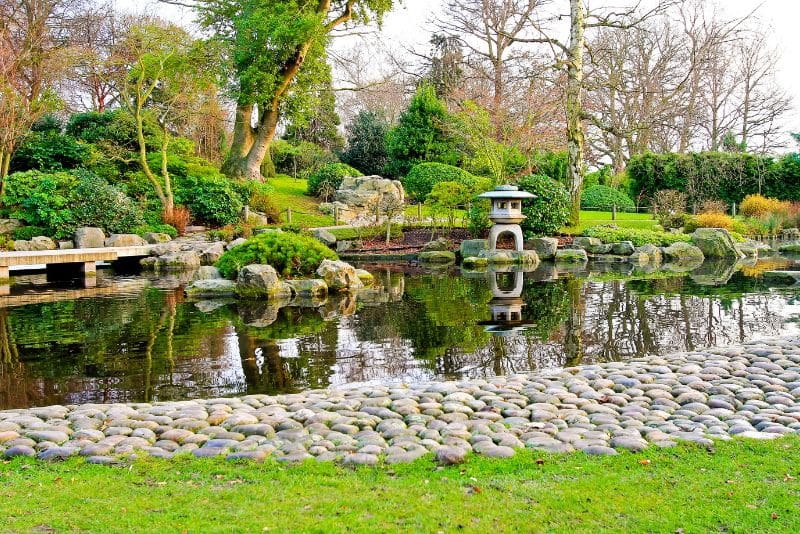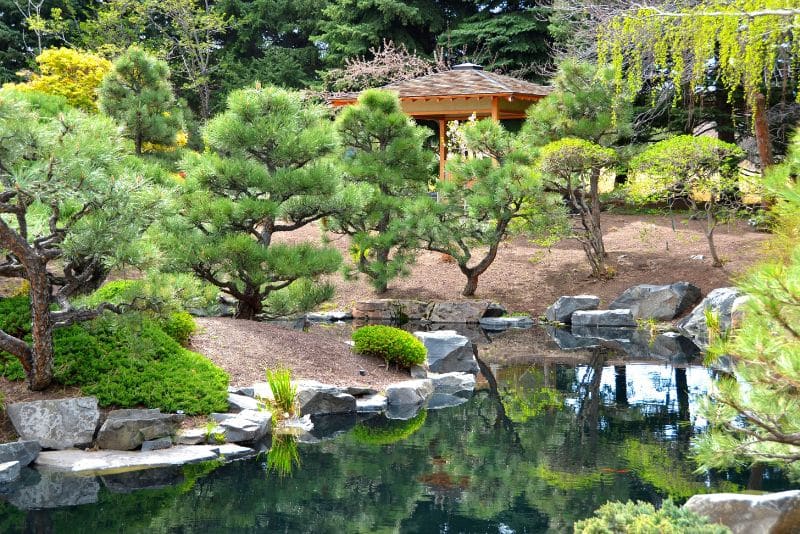Finding moments of tranquility and peace can be a rare luxury – the idea of a Zen garden retreat offers a serene escape right in your own outdoor space. This ancient Japanese art form has been refined over centuries, embodying the principles of minimalism, harmony, and mindfulness. Creating a Zen garden retreat in your backyard not only enhances the aesthetic appeal of your outdoor area but also serves as a sanctuary for relaxation and introspection.

The Essence of Zen Design
At the heart of any Zen garden retreat lies a deep understanding of its core principles. Zen gardens are a celebration of simplicity, balance, and the beauty of nature. To begin your journey toward creating a serene outdoor sanctuary, you must first embrace the essence of Zen design.
The first step is choosing the right natural elements which you can explore at harpersnurseries.com and see which plants might suit your garden the best. This also involves a commitment to minimalism, where every element serves a purpose and nothing is extraneous. The use of clean lines, uncluttered spaces, and a limited color palette is essential. By focusing on the essentials, you can create an environment that encourages mindfulness and inner peace.
Choosing the Right Location
Selecting the perfect location for your Zen garden retreat is a pivotal step in the design process. Ideally, you want a quiet and secluded spot where you can escape from the distractions of daily life.
Consider the natural elements already present, such as trees, rocks, or water features, as these can be integrated into your design to enhance the sense of harmony. Additionally, think about the orientation of your garden in relation to the sun and prevailing winds to ensure optimal comfort throughout the day.
Elements of Zen Design
Zen gardens are renowned for their simplicity, yet they incorporate specific elements that carry deep symbolism and meaning. These elements include rocks, gravel or sand, moss, and carefully pruned trees or shrubs.
Each element serves a unique purpose – rocks symbolize stability and permanence, while raked gravel or sand represents water or the flow of life. Moss adds a sense of age and timelessness, and carefully sculpted plants can represent the ever-changing nature of existence.
Understanding the symbolism behind these elements will enable you to create a more profound and meaningful Zen garden retreat.

Cultivating Mindfulness in Your Retreat
A Zen garden retreat is not just about aesthetics – it’s also a space for mindfulness and meditation. To cultivate mindfulness in your garden, consider incorporating meditation benches or cushions. These provide a comfortable place to sit and contemplate, allowing you to connect with the peaceful energy of your retreat. You can also include wind chimes, bamboo fountains, or bird feeders to engage your senses and heighten your awareness of the present moment.
Maintenance and Care
Maintaining the serenity of your Zen garden retreat requires ongoing care and attention. Regularly rake the gravel or sand to create the soothing ripple patterns that symbolize water’s flow. Trim and prune the plants meticulously to maintain their sculpted appearance and ensure they don’t overshadow the garden’s balance. Keep an eye out for weeds that may disrupt the garden’s minimalist aesthetic. Proper maintenance not only preserves the beauty of your retreat but also offers you an opportunity to practice mindfulness while tending to your garden.
Personalization and Creative Expression
While adhering to traditional Zen design principles is essential, don’t be afraid to infuse your Zen garden retreat with personal touches and creative expression. Choose specific plant varieties that resonate with you or reflect your local environment. Consider adding decorative elements like stone lanterns, statues, or even a small tea house if space allows. Personalization allows you to make your Zen garden retreat a unique reflection of your inner peace and creativity while still honoring the core principles of Zen design.
Seasonal Adaptation
One of the remarkable aspects of a Zen garden retreat is its ability to transform with the seasons. Embrace the changing colors and textures of nature by introducing seasonal elements like flowering plants in spring, lush greens in summer, fiery foliage in autumn, and minimalist winter arrangements. These adaptations not only keep your garden dynamic but also deepen your connection to the natural world and its constant cycles of change.

As you navigate the principles of Zen design, choose the right location, and select meaningful elements, remember that your garden will evolve, just as you do. By maintaining your retreat, infusing it with personal touches, and embracing seasonal adaptations, you’ll ensure that it remains a sanctuary for mindfulness and inner peace throughout the years. In the process, you’ll create a beautiful and serene outdoor space and start a transformative journey of self-discovery and serenity that extends far beyond your garden’s boundaries.
